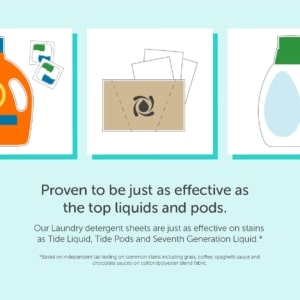 If you’re like most people, you put on your moisturizer each day and assume it’s helping your skin, so it’s got to be safe for your overall health. The problem is that unless you use a toxic chemical free moisturizer, the “good” your doing for your skin is likely offset by significant health risks caused by the harmful ingredients in your moisturizer.
If you’re like most people, you put on your moisturizer each day and assume it’s helping your skin, so it’s got to be safe for your overall health. The problem is that unless you use a toxic chemical free moisturizer, the “good” your doing for your skin is likely offset by significant health risks caused by the harmful ingredients in your moisturizer.
Why? The regulation of cosmetic ingredients in the US is surprisingly lax. For example, the FDA has only prohibited the use of 11 ingredients in cosmetics, compared to thousands in the EU and hundreds in Canada. The law does not require safety reviews before a cosmetic product is sold to consumers. And research has shown that what we put onto our skin can be absorbed into the bloodstream. Add that to the fact that common skincare ingredients are associated with health problems like cancer, asthma, hormone disruption, skin & respiratory allergies, and it’s probably sounding like a good idea to switch to a toxic chemical free moisturizer. Use the handy checklist below to get started.
Choosing a Chemical Free Moisturizer: Top 9 Ingredients to Avoid
1. Parabens – Parabens are preservatives commonly used in moisturizers and lots of other cosmetics products. The CDC has detected parabens in almost all Americans tested. These are “estrogenic” chemicals, meaning they interact with your body’s hormones in a way that’s similar to estrogen. Parabens have been linked to multiple health concerns including endocrine disruption, reproductive toxicity, neurotoxicity and skin irritation. To avoid parabens, avoid moisturizers with ingredients ending in -paraben.
2. Fragrances – Most moisturizers list “fragrance” on their ingredient labels, and did you know that one word can hide a cocktail of hundreds of potentially toxic chemicals? That’s because the fragrance industry is self-regulated and isn’t required to list all the chemicals that make up a fragrance. Health risks associated with fragrances include asthma, allergies, hormone disruption, neurotoxicity, immunotoxicity, and an increased risk of cancer. And unfortunately, so-called “natural” fragrances are just as toxic as synthetic fragrances. Further, most of the time, phthalates are part of the mysterious cocktail of ingredients making up a fragrance. Our best advice is to skip any fragranced moisturizer. If you seen one labeled “un-scented”, you still have to read the ingredient label because often fragrances are used to mask scents.
3. Phthalates – Phthalates are commonly used in fragranced products including moisturizers to help the scent last longer. Health risks for phthalates are startling and include cancer, human reproductive and developmental risks, endocrine disruption, birth defects & respiratory problems. Phthalates are not listed on ingredient labels because they are hidden behind that one mystery word: “fragrance”. To avoid phthalates, skip over any fragranced moisturizer.
4. Phenoxyethanol – The EU & Japan have restricted the use of this preservative that’s commonly used in moisturizers due to its association with skin, eye & lung irritation as well as eczema. Moms using products with phenoxyethanol are urged to keep it away from babies, so make sure to always wash your hands before handling your baby if you have a moisturizer with this in it. Better still, ditch it!
5. PEGs – This is another one very common in moisturizers that you’ll want to avoid. They are petroleum based chemicals associated with the contaminant 1,4 dioxane, which is classified as a carcinogen. PEGs are also associated with liver & kidney damage. To avoid these, skip moisturizers containing ethylene glycol polymers, PEG, or ceteareth.
6. Retinyl Palmitate – Retinyl palmitate is commonly used in moisturizers promising sun protection, but unfortunately it can actually contribute to UV-related sun damage. This ingredient is especially dangerous for children and breastfeeding or pregnant women because it can lead to a potential overdose on vitamin A. Avoid products that contain retinyl palmitate as well as these synonyms on their ingredient lists: vitamin a palmitate; axerophthol palmitate; hexadecanoate retinol; retinol palmitate; retinol, hexadecanoate; aquasol a; arovit; optovit-a; retinol palmitate.
7. Octinoxate or Octyl methoxycinnamate – Octinoxate is a UV-B filter often found in moisturizers. It’s a xenoestrogen that disrupts the endocrine system as well as thyroid function. Research has also indicated that octinoxate can cause reproductive and developmental toxicity. Look for chemical free moisturizer alternatives with UV-B filters like titanium dioxide and zinc oxide. To avoid octinoxate, skip moisturizers containing any of these ingredients: Octyl methoxycinnamate; 2-Ethylhexyl-p-methoxycinnamate; 2-Ethylhexyl methoxycinnamate; 2-Ethylhexyl-4-methoxycinnamate; 2-Propenoic acid, 3-(4-methoxyphenyl)-, 2-ethylhexyl ester; Octinoxate; 2-Ethylhexyl p-methoxycinnamate; Ethylhexyl Methoxycinnamate.
8. Oxybenzone – Oxybenzone is another UV filter and UV absorber that’s commonly used in moisturizers. The skin readily absorbs it and it accumulates in the body over time. Oxybenzone disrupts the normal functioning of the endocrine system and causes biochemical and cellular changes. To avoid it, skip moisturizers containing 2-Hydroxy-4-methoxyphenyl)phenylmethanone; 2-Hydroxy-4-methoxybenzophenone; Benzophenone-3; Methanone, (2-hydroxy-4-methoxyphenyl)phenyl-; Oxybenzone; Benzophenone, 2-hydroxy-4-methoxy-.
9. Polyacrylamide – This ingredient functions as a stabilizer and a binder in moisturizing lotions. Its use is regulated in the European Union, but not by the United States. The concerns about this chemical have arisen due a by-product from its manufacturing process, which is called acrylamide. Acrylamide is a carcinogen as well as a reproductive and developmental toxicant. As a result, it makes sense to avoid this ingredient in moisturizers and go for a chemical free moisturizer. Skip any moisturizers listing these ingredients: polyacrylamide; 2-propenamide, homopolymer; acrylamide, polymers.
Learn More
Skipping products with the toxic villains above will get you off to a great start as you switch to a chemical free moisturizer. Another great resource is the EWG Skin Deep Cosmetics Database for researching specific products and other ingredients.



